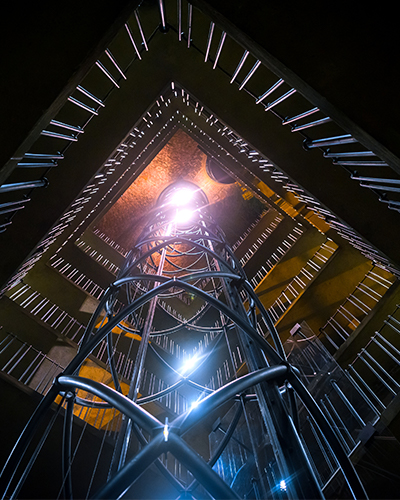Prysmian Group using electronics expertise to offer value-added services
Executive VP and R&D Chief Officer Srini Siripurapu sees competitive advantage from fiber and electronics sensing

Executive VP and R&D Chief Officer Srini Siripurapu sees competitive advantage from fiber and electronics sensing
What if an elevator cable could tell the building maintenance system it is getting worn out, or if a crane cable could warn the operator that it is stretched and risks a break down? They can. These are just two applications developed by Prysmian Group’s global Research & Development team as it works to exploit expertise in fiber sensing and electronics to deliver new value-added services to customers.
Prysmian is working to create “intelligent cable” applications that can provide services that many customers already say the need along with cables themselves. Some of these innovations have already been rolled out, and some are still under wraps at the company’s R&D center at Milan headquarters and other labs around the world.
“Prysmian has a good competitive advantage in these two areas: fiber sensing and electronics sensing,” says Srini Siripurapu, Executive Vice President and R&D Chief Officer. “We are using our expertise in electronics to provide sensors and solutions where our customers can monitor the health of their whole system, adding a layer of service on top of the cable.”
The goal is to add more and more types of sensors to cables so they can be useful to customers not only for their basic functionality but also to enable them to control efficiency and functioning during their use or to even supply additional services. These hybrid or smart cables use sensors and electronics-based solutions to let customers monitor the health and functioning of the entire system and take a shift in their asset management strategies towards predictive maintenance rather than preventive.
The Group is leveraging the electronics expertise of Prysmian Electronics as well as developing other solutions in house.
Among its many product development projects, Prysmian Electronics is developing permanent combined real-time monitoring systems capable to detect potential problems and support our customers in the effective management and maintenance strategies of their assets. These technologies, for example will be used by French utility EDF Renewables in the PGL project, France’s first offshore floating wind park that should be completed in 2021.
The PGL project is the first example in the world of a full combined permanent monitoring system for an offshore wind park,” says Prysmian Electronics founder and CEO Roberto Candela. “The monitoring system, designed in close collaboration with the client, enables them to constantly monitor and guarantee the rating of the transmission system.

Prysmian Electronics founder and CEO
The future goal of Prysmian’s innovation activity in sensing cables is to create an entire monitoring solution from cable to end user, explains Luca De Rai, R&D Energy Director.
“On one end we start with a sensor, which can be an optical fiber,” he says. “Critical information is collected from our cables by means of an electronic device and processed through complex mathematical models. At the other end, our customers receive a set of relevant data analytics that provides valuable guidance on optimal operations and predictive maintenance of their assets.”

Here are some specific examples of “smart” cable solutions:
The Protolon IQ crane cable has a tension sensor (TESE) located inside the cable that measures strain caused by mechanical stress in real time along the entire cable length. The function of this sensor is to tell the operator when the cable is twisted or needs to be changed, thus avoiding costly unplanned shutdowns.
The Pry ID is a sort of “fingerprint” for a cable that uses a small Radio Frequency Identification Tag (RFID) containing information about size, length and type to help building managers identify were a cable is located and which one it is.
Draka Elevator is working with Prysmian Electronics to develop sensor-based products to be installed in elevators that can support building owners and service companies in monitoring and planning of maintenance activities. Machine learning, AI and predictive analytics drive decisions to schedule repairs and maintenance reducing unscheduled downtime. The new product will be launched later this year.

